
Leo

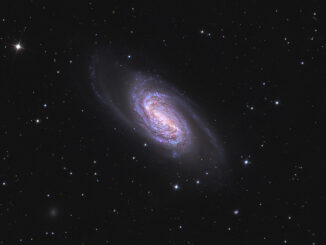

Seek out 1998 OR2, the brightest predicted near-Earth asteroid encounter of 2020
A near-Earth object (NEO) and potentially hazardous asteroid (PHA) with the catchy official name of 52768 (1998 OR2) passes just 16.4 lunar distances (6.3 million kilometres) from Earth at 09:56 UT on Wednesday, 29 April 2020. Here’s our guide to locating this fascinating asteroid in 15-cm (6-inch) aperture telescopes and smaller from the UK this month.
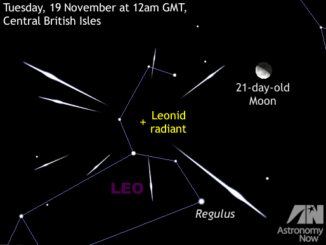
Moonlight challenges Leonid meteor shower maximum on 18 November
The maximum of the annual Leonid meteor shower is predicted for 11pm GMT (23h UT) on Monday, 18 November 2019. However, the famously swift, bright Leonids — some leaving persistent trails — will have to contend with the glare of a 21-day-old waning gibbous Moon close by visible from 9:30pm GMT to dawn on the 19th.

Don’t miss the largest Supermoon of 2019 on 19 February
If skies are clear at dusk in Western Europe and the UK on Tuesday, 19 February, be sure to glance up at the full Moon in the constellation of Leo. If the lunar orb seems a bit larger than usual then you’d be right, for this is the closest full Moon of 2019. Since it occurs just 6¾ hours after lunar perigee, it’s also a supermoon. And if it’s cloudy, you can watch online!
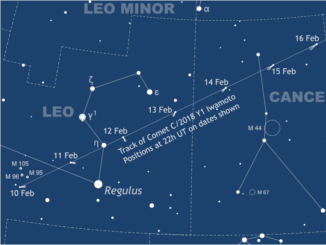
See Comet Iwamoto’s dash through Leo, Cancer and Gemini before full Moon
Grab your binoculars to catch a glimpse of speedy Comet C/2018 Y1 Iwamoto over the coming week before the glare from a full Moon on 19 February drowns it out. Potentially attaining magnitude +6, the comet passes closest to Earth on 12 February when it can be found traversing Leo at a rate of 7.2 degrees/day. Don’t miss C/2018 Y1’s close enounter with galaxy NGC 2903 on 13 February – by eye, camera, or live online.

See the Leonid meteor shower peak on 18 November
The Leonid shower is well known for fast meteors, the brightest of which can leave persistent trains that appear to hang in the air for several seconds. This year’s maximum is predicted for 1am GMT on Sunday, 18 November. With a 9-day-old waxing gibbous Moon setting around the time of the shower’s peak in the UK, prospects are good.

See innermost planet Mercury’s favourable dawn show
Mercury attains its maximum westerly elongation from the Sun on 26 August, meaning that the innermost planet is currently well placed for observation from the UK and Western Europe in the eastern sky around 40 minutes before sunrise. In addition to those in the evening sky, you might just see all five bright naked-eye planets this month!
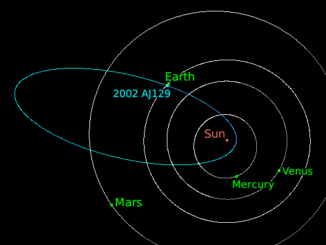
See bright near-Earth asteroid 2002 AJ129 dash through Virgo and Leo, 5–7 February
Possibly a kilometre or more in size, Apollo asteroid 2002 AJ129 passes just 10.9 lunar distances from Earth at 21:30 UT (9:30pm GMT) on 4 February — its closest approach for 114 years. For a few nights around this date the magnitude +12.6 body is well placed for observers as it gallops through the constellations of Virgo and Leo into Cancer at a rate of up to 40 degrees/day. We show you where and when to look for it.
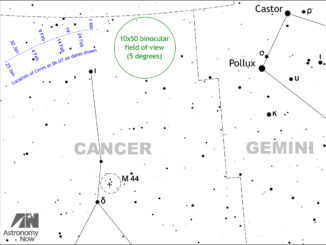
See dwarf planet Ceres at opposition on 31 January
While antipodean observers are enjoying views of the totally eclipsed Blue Moon in Cancer the Crab on the night of 31 January/1 February, Northern Hemisphere observers should look out for magnitude +6.9 1 Ceres at opposition in the northern fringes of the same constellation. The dwarf planet puts on a good show in the dark of the Moon during February.
